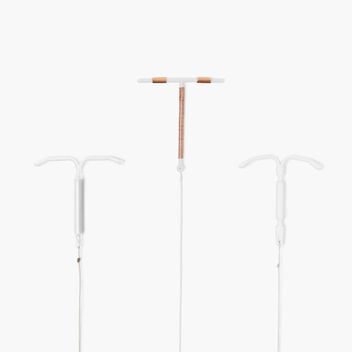Vasectomy
Vasectomy — also called "male sterilization" — is a surgical procedure. It helps protect men, trans, and nonbinary people with penises against pregnancy permanently.
What is a vasectomy?
A vasectomy is a simple surgery done by a doctor in an office, hospital, or clinic. The small tubes in your scrotum that carry sperm are cut or blocked off, so sperm can’t leave your body and cause pregnancy. The procedure is very quick, and you can go home the same day. And it’s extremely effective at preventing pregnancy — almost 100%.
There are two types of vasectomies: the incision method, and the no-scalpel (no-cut) method. No-cut methods lower the risk of infection and other complications, and generally take less time to heal.
Vasectomies are meant to be permanent. You should only get a vasectomy if you’re 100% positive you don’t want to be able to get someone pregnant for the rest of your life.
The term “vasectomy” comes from the name of the tubes in your scrotum that are blocked during the procedure: vas deferens.
How does a vasectomy work?

Sperm — the microscopic cells that join up with an egg to cause pregnancy — are made in your testicles. Sperm leaves the testicles through two tubes called the vas deferens, and mixes with other fluids to make semen (cum). The sperm in your semen can cause pregnancy if it gets into a vagina.
A vasectomy blocks or cuts each vas deferens tube, keeping sperm out of your semen. Sperm cells stay in your testicles and are absorbed by your body. Starting at least 2 months after a vasectomy, your semen (cum) won’t contain any sperm, so it can’t cause pregnancy. You must have your semen tested 8-16 weeks after your vasectomy to make sure there’s no sperm in your semen.
After your vasectomy, your semen (cum) will still look, feel, and taste the same. You’d have to look at it under a microscope to see a difference. You’ll still have the same amount of semen you did before — there just won’t be sperm in it so you can’t get anybody pregnant. Vasectomies don’t change the way having an orgasm or ejaculating (cumming) feels, and they don’t impact your hormone levels, sex drive, or ability to get an erection (get hard).
Can a vasectomy be reversed?
Vasectomies are meant to be permanent, so they can’t always be undone.
It’s sometimes possible to reverse a vasectomy, but there are no guarantees — your fertility may not come back. Vasectomy reversal is a complicated surgery, and it can be very expensive.
Whether or not a vasectomy reversal might work depends on:
-
How long ago you got the vasectomy.
-
The type of vasectomy you got.
-
The type of reversal procedure you get and the skill of the doctor.
If you’re worried about reversal when thinking about getting a vasectomy, it’s probably best to hold off.
Before you get a vasectomy, think about any possible life changes that could affect you in the future, like a divorce, a new partner, or the death of a child. You don't need your partner's permission to have a vasectomy — but it may be helpful to talk about it with your partner (or anyone else who could offer support and advice).
There are other ways to prevent pregnancy that aren’t permanent, like condoms, outercourse, and withdrawal. And your partner has lots of birth control options too. IUDs and implants are nearly as effective as vasectomies and last for a long time, but they’re not permanent.
 Abstinence
Abstinence
 Breastfeeding
Breastfeeding
 Cervical Cap
Cervical Cap
 Condom
Condom
 Diaphragm
Diaphragm
 FAM
FAM
 Female Condom
Female Condom
 Implant
Implant
 IUD
IUD
 The Patch
The Patch
 The Pill
The Pill
 The Ring
The Ring
 The Shot
The Shot
 Spermicide
Spermicide
 Sponge
Sponge
 Sterilization
Sterilization
 Vasectomy
Vasectomy
 Withdrawal
Withdrawal